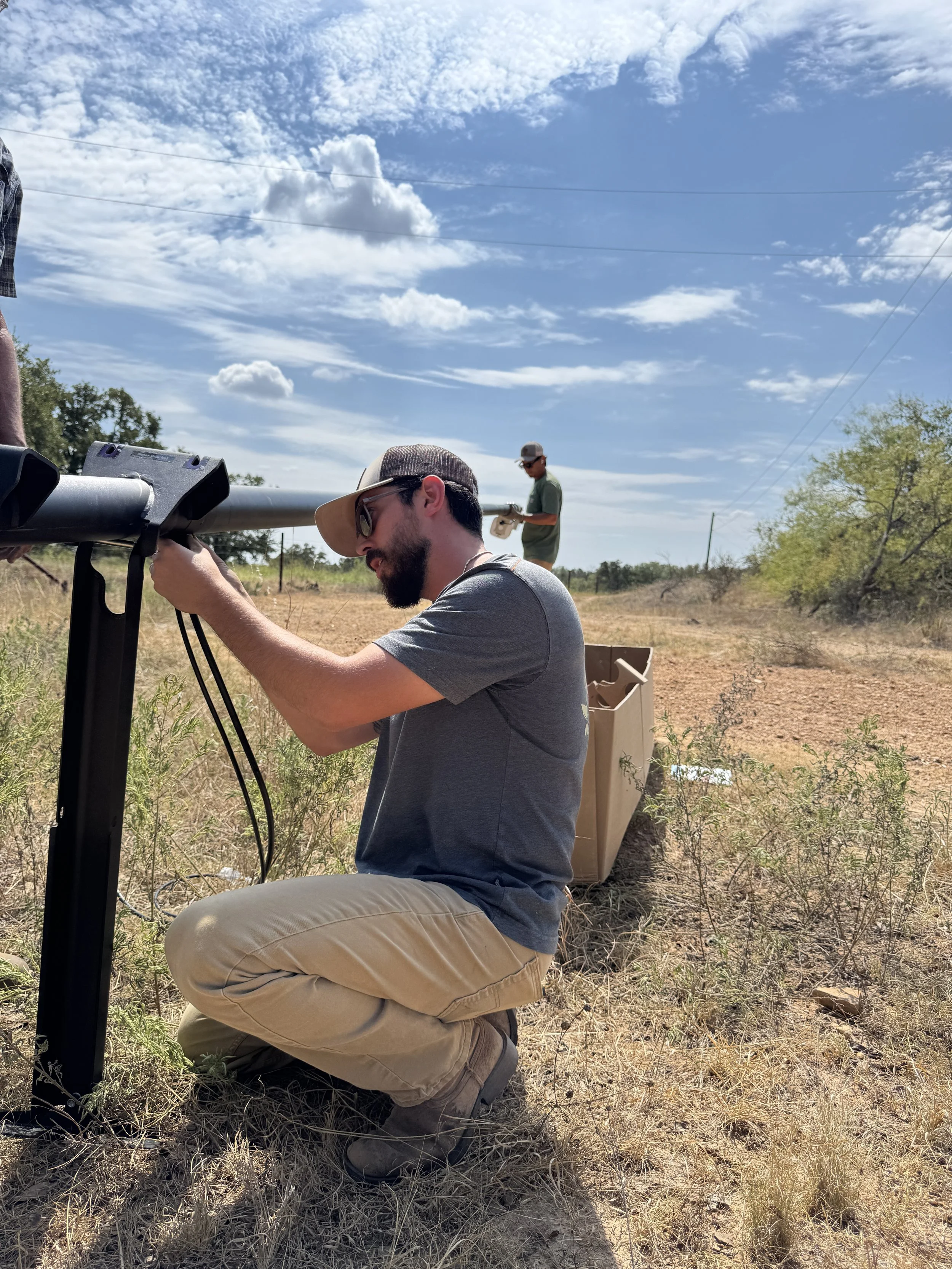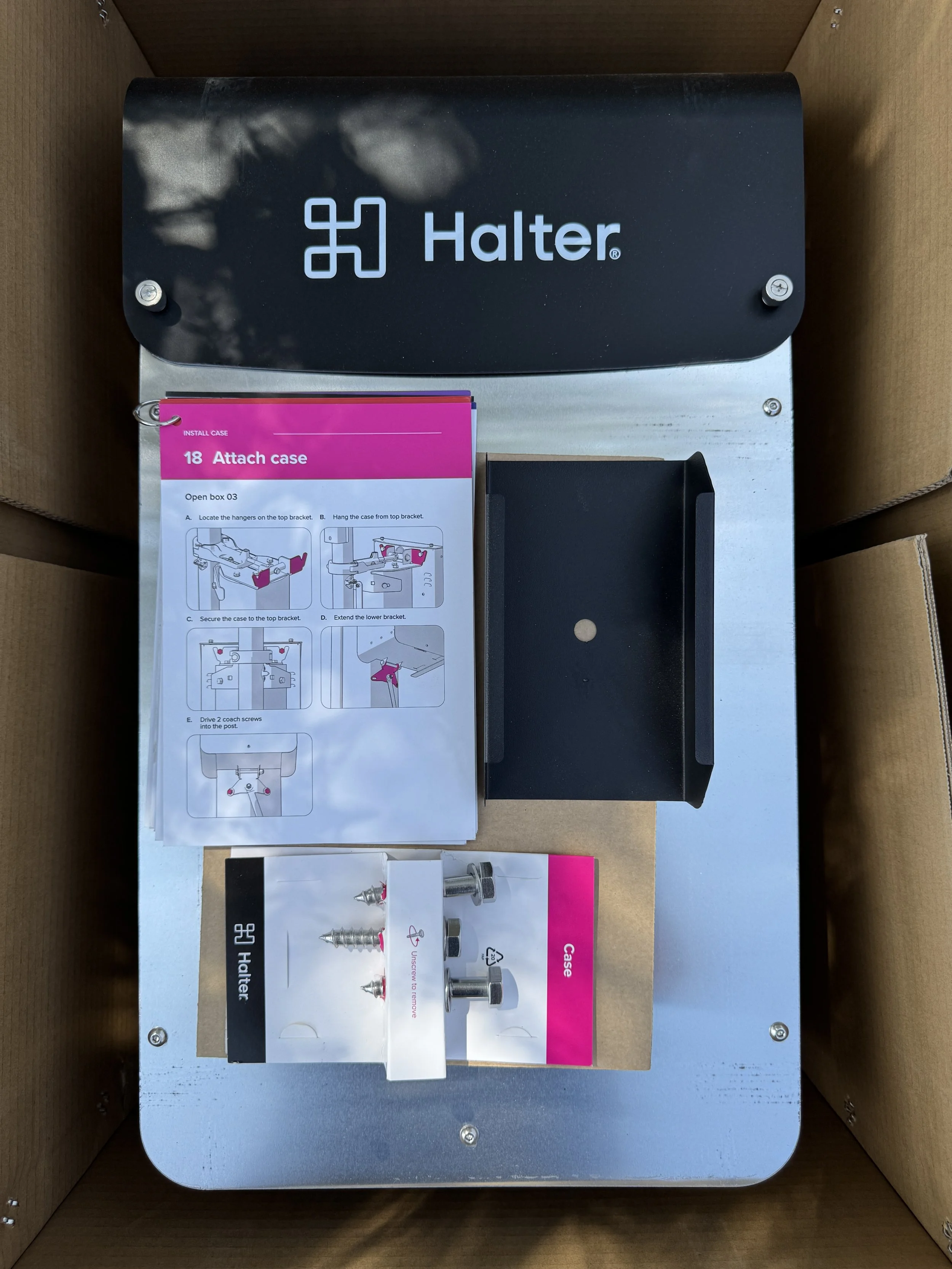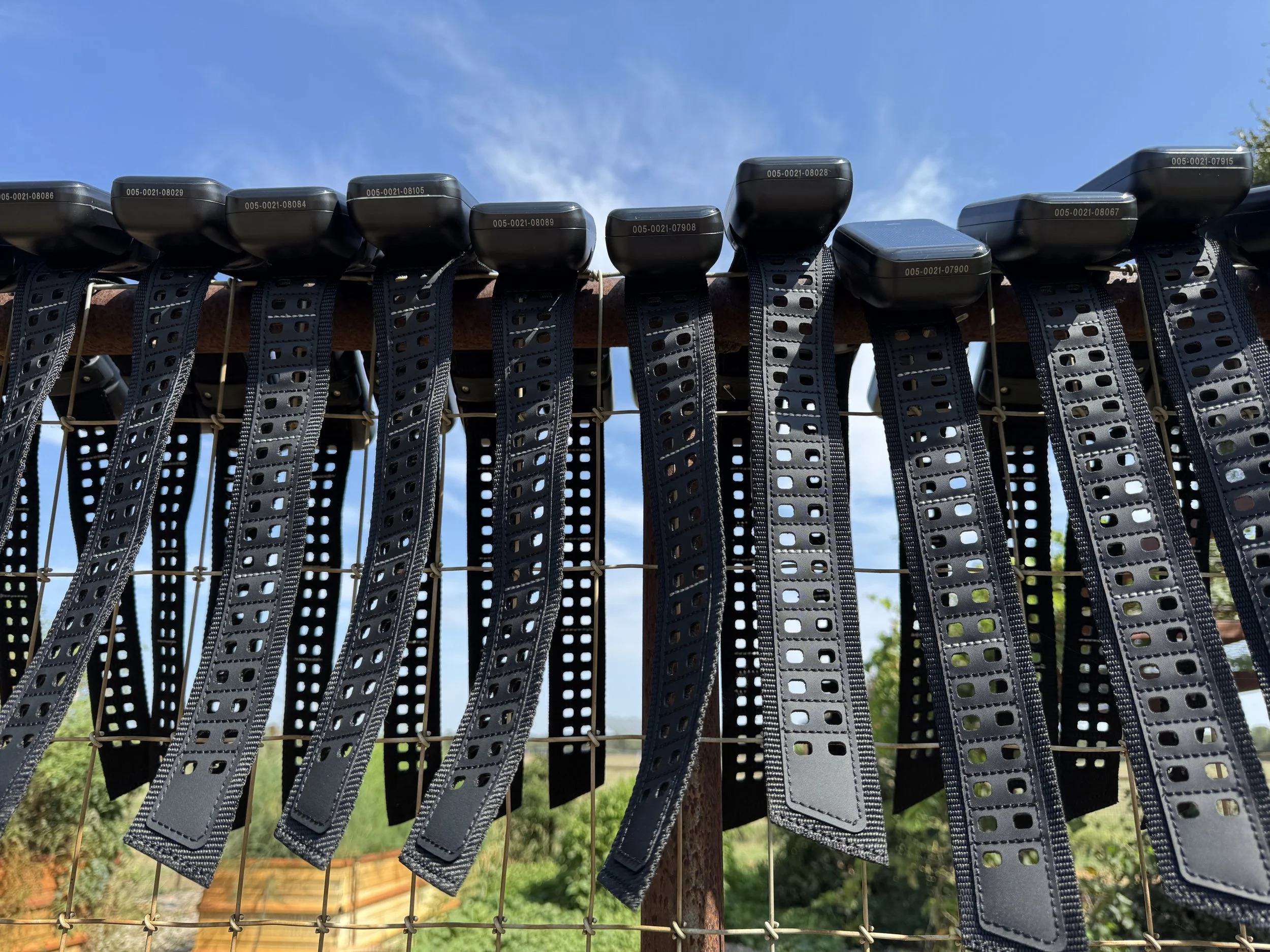Setting Up Virtual Fencing: Top 5 Takeaways
For several years, I’ve been a spectator, watching my dad manage our family’s ranch on the northern edge of the Texas Hill Country. It’s a rugged, beautiful landscape—dotted with boulders the size of Volkswagens.
When I transitioned from the business world into a role with NatGLC two years ago, I dove into every grazing resource I could find. I began processing what I was learning, seeing, and hearing from producers out loud, and before long, my family was absorbing grazing strategies by proxy.
This past year, we started applying some of those practices at home. That’s when things began to shift. We started talking seriously about adaptive grazing, profitability, and succession. As a result, the focus turned to infrastructure, with water and fencing becoming top priorities.
However, those Volkswagen-sized boulders make building barbed wire or even electric fencing labor-intensive, expensive, and time-consuming. So, when the ranch started looking into virtual fencing, specifically Halter’s system, it didn’t take long for them to call and ask if I wanted to help with the installation.
So, here are five takeaways from our virtual fencing installation:
1. The tower installation takes less than an hour
The Halter tower was fully installed in 30 minutes. We even took a brief break due to 90-degree heat, with four people helping with the installation. The instructions were easy to follow, and I observed that two people could have easily handled the setup. The tower is shipped in four sections and includes all necessary tools to ensure a successful installation. The setup process was engineered for simplicity and speed.
2. Halter’s customer service is exceptional
The Halter team provided thorough support. The ranch communicated with a five-person support team, along with an emergency contact for real-time troubleshooting. Communication options included both calls and texts, making it easy to stay in touch. The ranch manager, Terry Hancock noted, “We experienced very little lag time, actually none, and every question was answered clearly. Halter is awesome!”
3. Setup is thoughtfully designed
The entire setup process is color-coded and supported by a durable, easy-to-read instruction manual. The tower includes its own toolbox, and components are designed for hassle-free assembly. One standout feature is the tower’s integrated level, which helps ensure proper alignment and stability in uneven terrain. I kept hearing, “This is slick,” whenever another part was pulled out of the shipping boxes.
4. The collars are solar-powered and built to withstand the elements
Each collar features solar panels on both sides to maintain a consistent charge, and the materials are flexible, very similar to a dog collar. With 50 head of cattle set to wear the collars, the ranch team was impressed by the quality. Depending on how you handle your cattle, getting the collars on can take the most time and require more support.
“You can tell there’s been time and investment in these products,” Hancock said. “That gives us confidence [Halter] will be around for the long haul.”
5. The whole team bought into the technology
Halter provides an onboarding process through webinars and digital resources that makes the introduction and integration of the technology seamless. From the owner to the ranch hands (ages 28 to 72) everyone was able to quickly understand and start using the platform.
Virtual fencing now allows the ranch to graze areas that were once considered “ungrazable.” Hard-to-fence sections of land can now be incorporated into a planned grazing rotation with the ease of your phone.
Conclusion
In areas like the Texas Hill Country, virtual fencing is more than just a novelty. It’s a practical solution. As the intersections between agriculture and technology grow, tools like virtual fencing are helping make managed grazing more accessible and enjoyable.
Are you interested in learning more about managed grazing tools? Explore grazinglands.org/education
To learn more about Halter, visit halterhq.com/en-us



